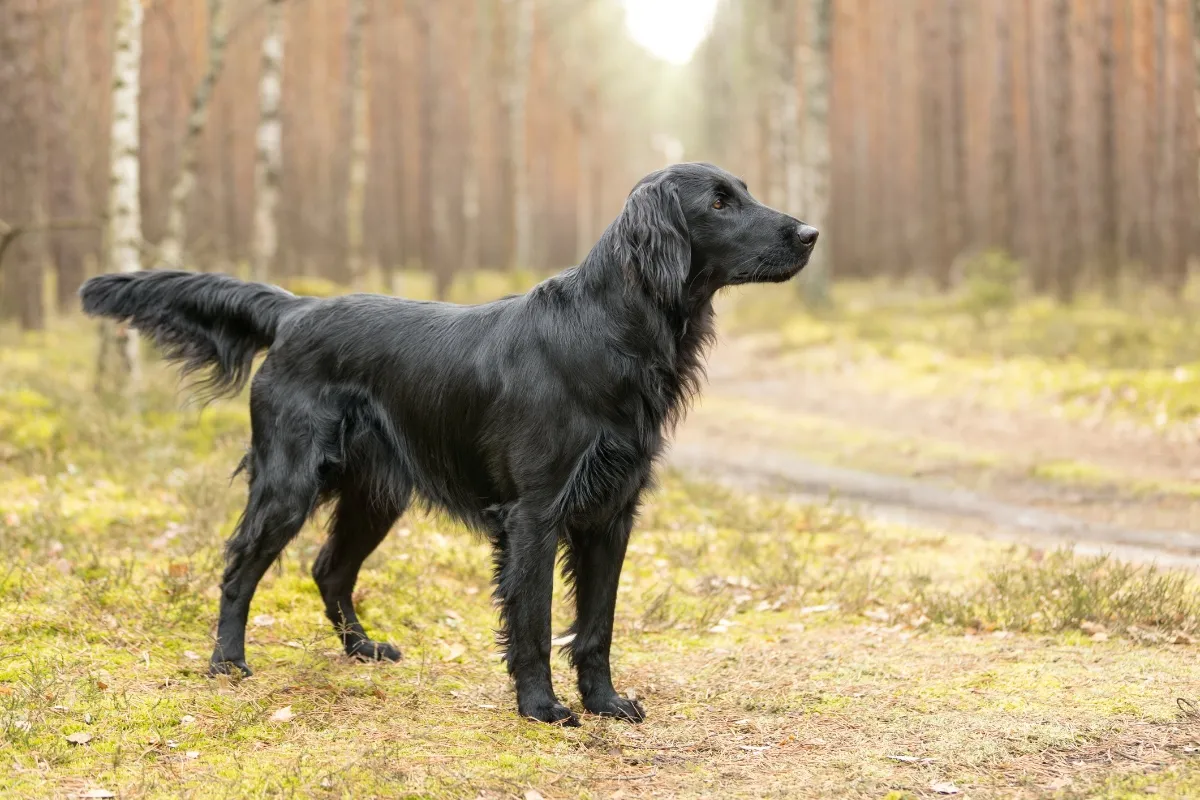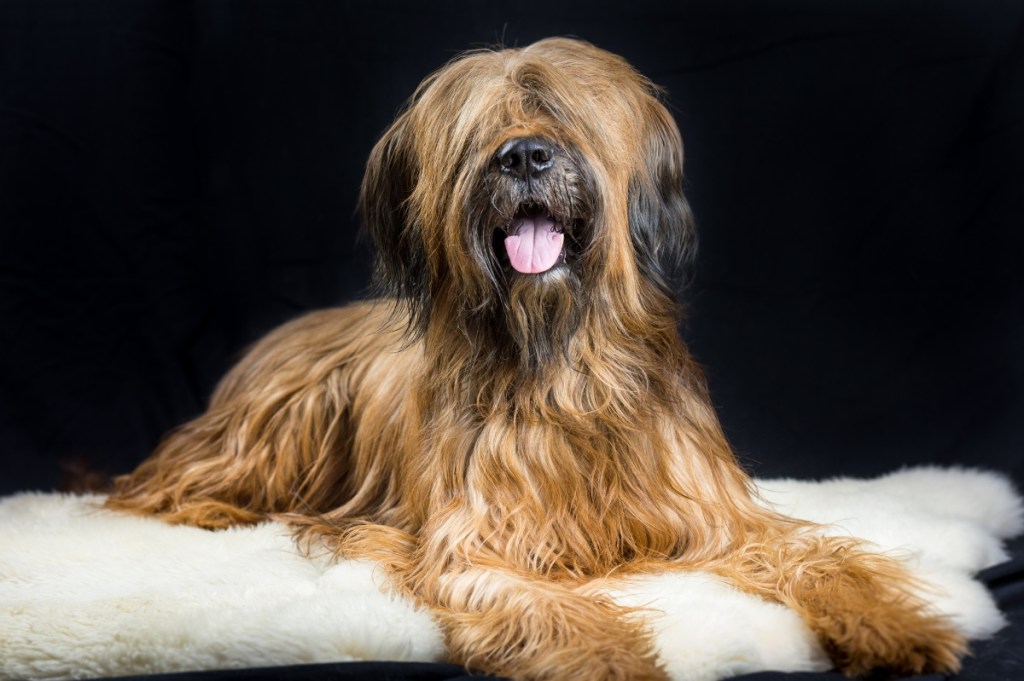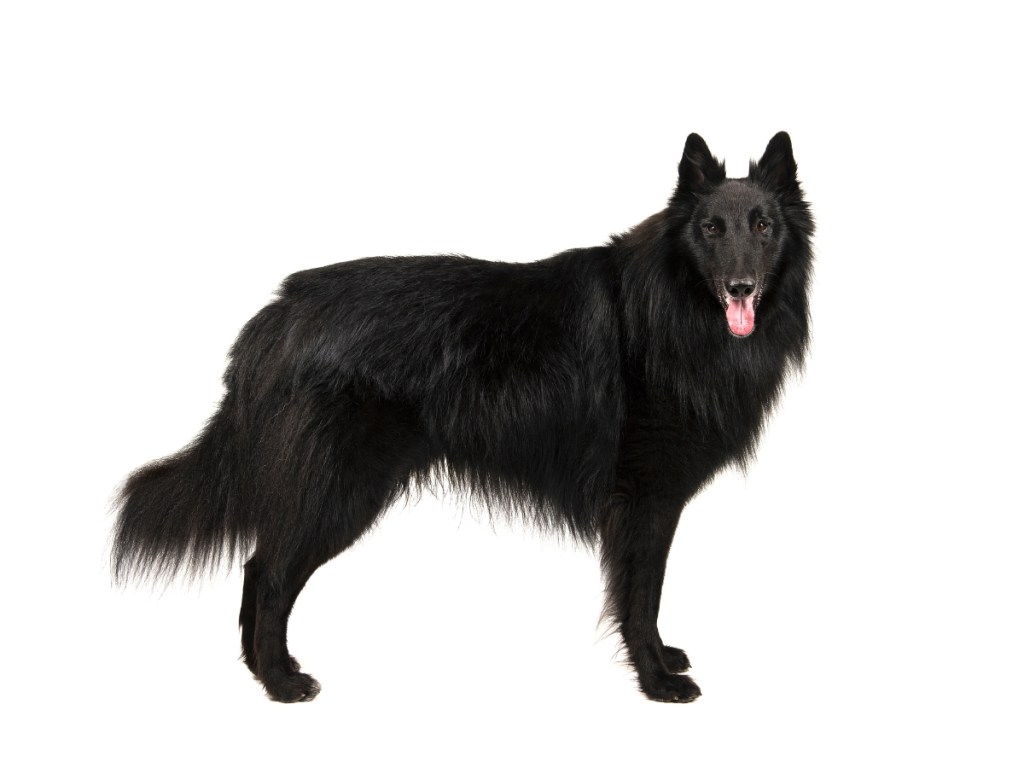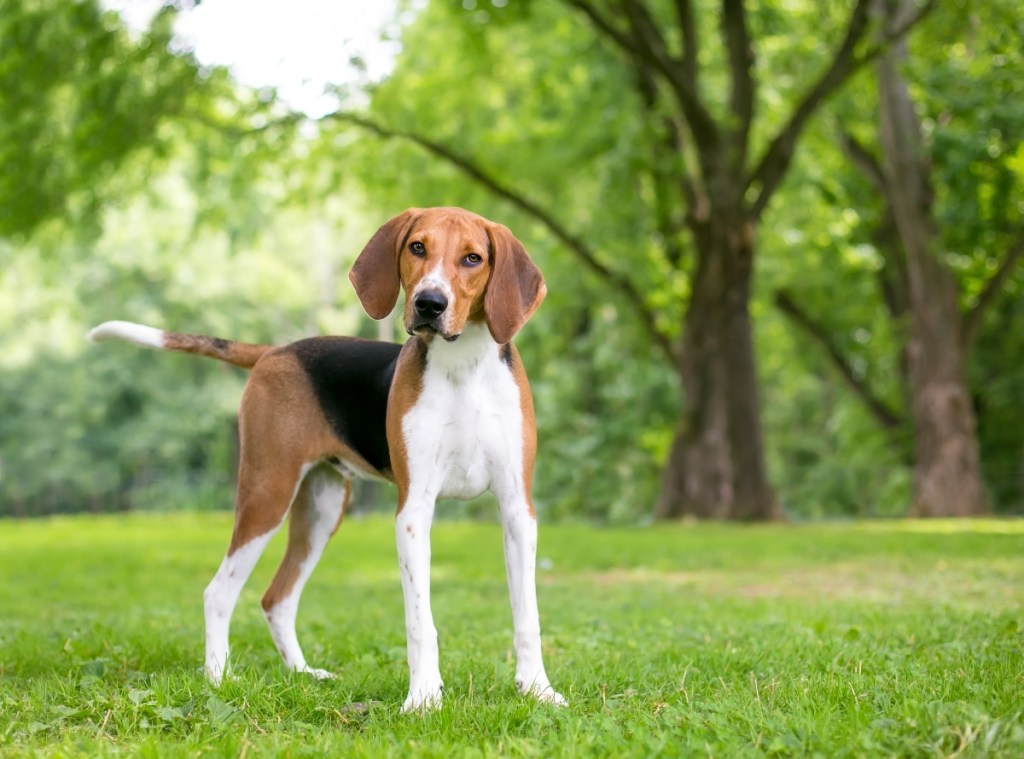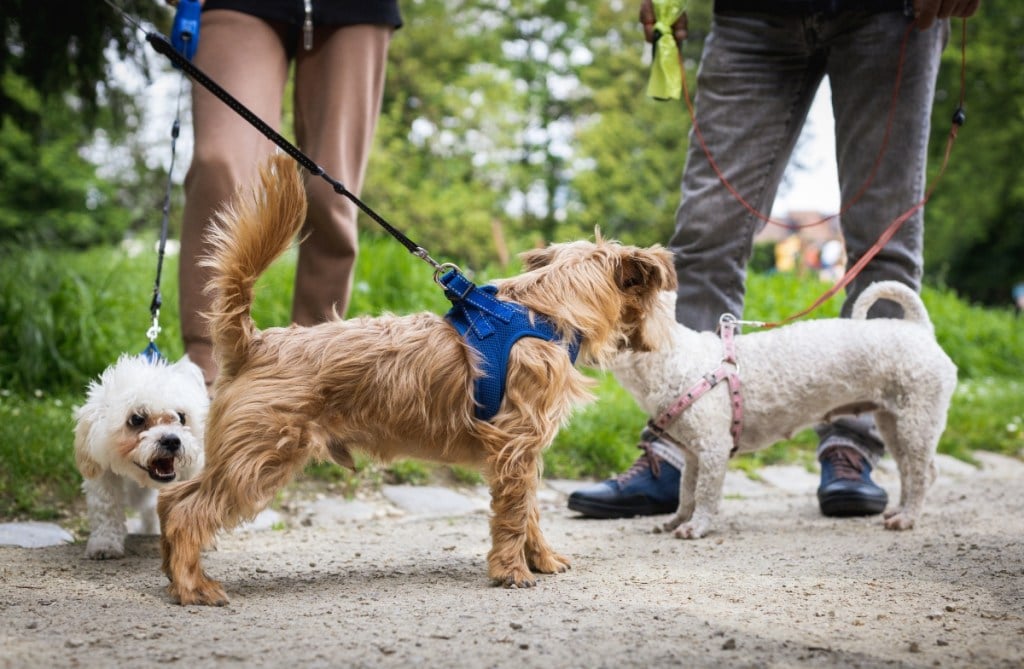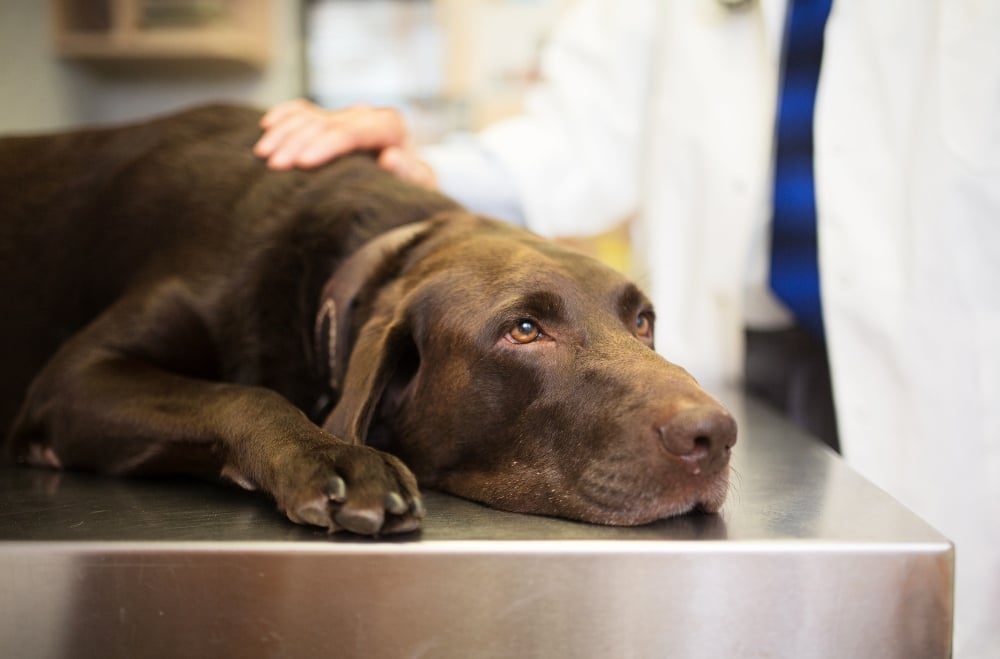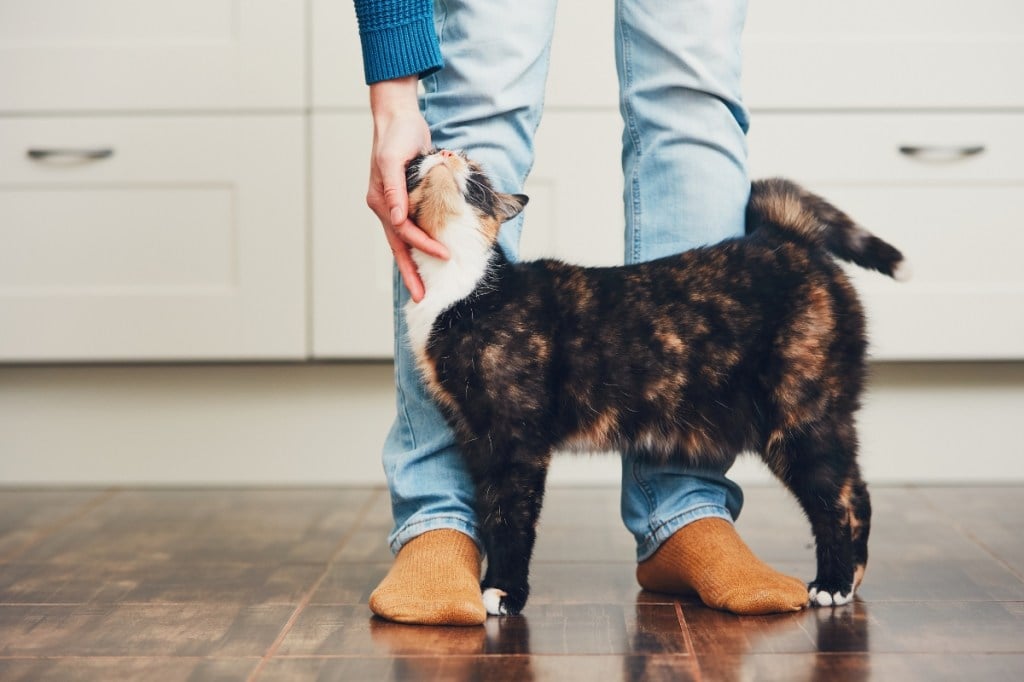Introduction to Flat-Coated Retrievers
Cheerful, good-humored, and active, the flat-coated retriever is an easy dog breed to fall in love with. These dogs excel at so many different activities, including obedience training, agility courses, and therapy work. They are Sporting Group dogs that were initially bred for hunting, but they now thrive with families who are outdoorsy and full of energy.
In this Healthy Paws dog breed guide, you’ll learn all about the flat-coated retriever, including the dog’s personality, size, care, feeding, and common health concerns.
Size of Flat-Coated Retrievers
When a flat-coated retriever is fully grown, the dog will weigh 60 to 70 pounds. Male flat-coated retrievers stand 23 to 24.5 inches tall, and females are 22 to 23.5 inches tall. Female dogs of this breed stop growing by about 16 months of age, and males stop growing between 16 and 19 months. Females may be slightly longer than males to equip them for carrying puppies.
Here’s how big you can expect your flat-coated retriever to get as the dog grows from puppyhood to adulthood:
| Weight Chart | 3 months | 6 months | 12 months |
| Male flat-coated retrievers | 23 – 28.8 lbs. | 42.7 – 53.9 lbs. | 57.7 – 75.4 lbs. |
| Female flat-coated retrievers | 21.3 – 26.3 lbs. | 39.6 – 49.1 lbs. | 53.4 – 67-9 lbs. |
Characteristics of Flat-Coated Retrievers
Certain characteristics of flat-coated retrievers make them unique from other dog breeds. For example, flat-coated retrievers have smart and kind expressions, lots of energy, and a rambunctious nature that is either amusing or annoying, depending on your perspective! They are also sensitive dogs that do nearly equally well in cold and hot weather but do not do well left alone for extended periods.
As you get to know a flat-coated retriever’s personality, here’s what you can expect based on the breed characteristics:
| Breed Characteristic | Level (High, Medium, Low) |
| Affectionate with People | High |
| Good with Kids | High |
| Good with Pets | High |
| Need for Exercise | High |
| Energy Level | High |
| Intelligence Level | High |
| Able to Be Trained | Medium |
| Amount of Barking | Medium |
| Amount of Shedding | Medium |
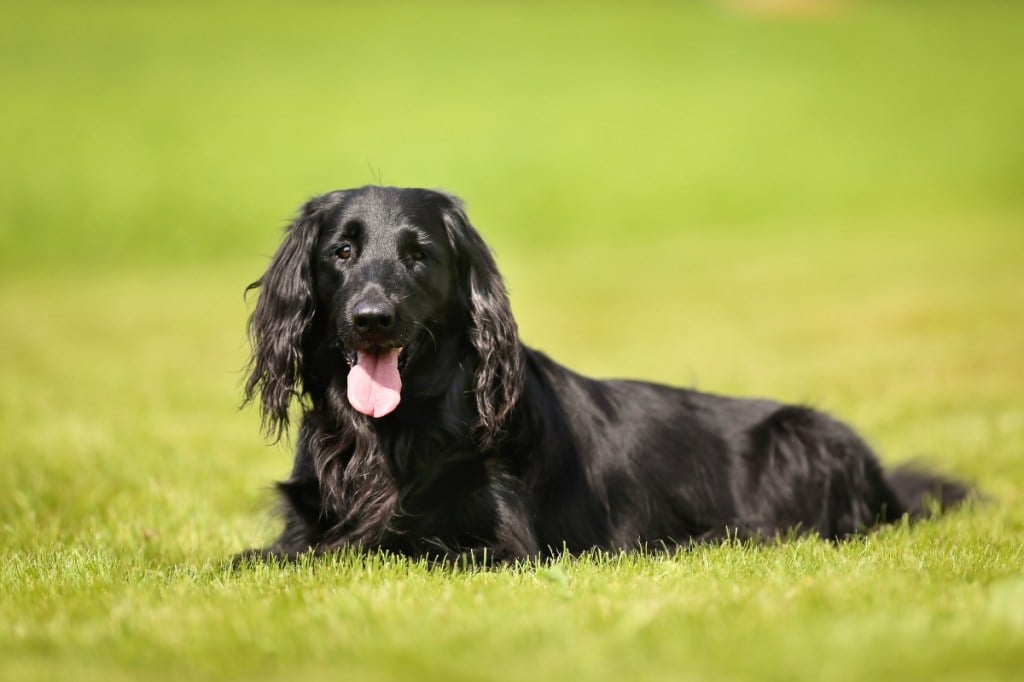
History of Flat-Coated Retrievers
Like other retriever breeds, the flat-coated retrievers were designed to retrieve game on hunting trips. They are highly trainable and intelligent lake hunters that excel at gathering downed waterfowl and bringing them back to hunters. The dogs do this by swimming through water to retrieve waterfowl that has been shot down. The dog’s hunting skills also extend to playtime and agility sports, as the breed loves playing fetch, swimming through water, and playing backyard games.
Flat-coated retrievers first emerged as a dog breed in the mid-1800s and were once the most popular type of retriever in Britain. Genetically, flat-coated retrievers are linked to the St. John’s Dog and setter-type dogs. Alternate names for the breed include the black wavy retriever, smooth-coated retriever, and wavy-coated retriever. The dog’s coat is remarkable because it protects it from icy water, harsh weather conditions, and lots of ground to cover while running.
The American Kennel Club admitted its first flat-coated retriever in 1915. The dog’s popularity dipped very low after World War I when Labrador retrievers and golden retrievers became more preferred. However, the breed experienced a comeback in the mid-1960s and is now a beloved member of many modern families.
Flat-Coated Retriever Standard Information
In the official standard for the flat-coated retriever, the dog is described as happy, active, and utilitarian, with an elegant look and effortless movement. This is the standard by which dogs of this breed are judged at shows and competitions.
Here is an overview of the breed standard information for flat-coated retrievers:
Head:
- Clean, long head that can easily retrieve a pheasant, hare, or duck
- Relatively flat skull of moderate breadth
- Alert expression with eyes set widely apart
- Relatively small ears that lie close to the sides of the head
- Scissors bite is preferable, but level bite is acceptable
Neck, Topline, Body:
- Strong and slightly arched neck for retrieving
- Untrimmed coat on the neck
- Deep, moderately broad chest
- Loin is strong and well-muscled
- Fail is fairly straight and well set on
Forequarters:
- Shoulders are long and well laid back
- Pasterns are slightly sloping and strong
- Optional removal of front dewclaws
- Feet are oval or round with well-arched toes and thick pads
Hindquarters:
- Powerful and well-muscled upper thighs
- No hind dewclaws
- Hind feet are similar to front feet
Coat:
- Moderate length density and fullness with high luster
- Straight and flat-lying
- Protects against all weather, water, and ground cover
- Feathering is not excessively long
- Show with as natural of a coat as possible, with minimal or no trimming
Color:
- Solid black or solid liver coloration
Gait:
- Free-flowing, well-coordinated, and never choppy
- Long, clean strides
- Topline is level, strong, and supple while in motion
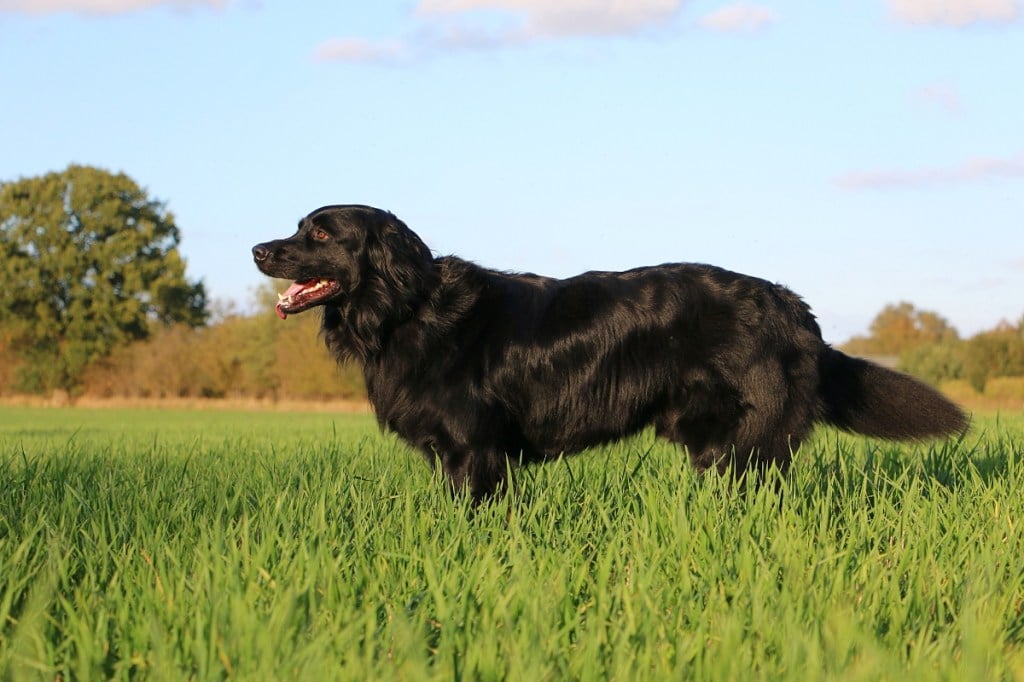
Caring for Flat-Coated Retrievers
It is important to understand that flat-coated retrievers require a lot of daily exercise to be healthy and happy. If they don’t get the necessary exercise, they can become excessive barkers or chewers.
Here are some general tips for taking the best care of a flat-coated retriever:
Best Living Environments:
- Homes with active families
- Houses with fenced-in yards
- Environments with easy access to trails and parks
- Homes where they are not left alone for much of the day
Type of Exercise:
- At least two hours of exercise per day
- Long walks, hiking, and running
- Swimming in safe bodies of water
- Running alongside a bicycle
Mental Enrichment:
- Puzzle toys
- Dog sports, like agility and rally activities
Training Strategies:
- Very trainable dogs that connect easily with humans
- Use positive reinforcement training methods
- Consider training to become a service or therapy dog
Grooming Tips:
- Brush weekly to prevent matting and remove loose fur
- More significant shedding in the spring and fall
- Clean ears weekly to avoid wax buildup and infection
- Clean and dry ears after swimming
- Trim nails monthly if not worn down outside
- Brush teeth daily
Common Health Problems of Flat-Coated Retrievers
The average lifespan of a flat-coated retriever is eight to 10 years; however, some dogs of this breed live slightly longer than this. These dogs are prone to certain health conditions because of their breeding and genetics. The national breed club for flat-coated retrievers recommends the following health tests before breeding flat-coated retrievers: patella evaluation, hip evaluation, and ophthalmologist evaluation.
These are some of the most common health issues that arise with flat-coated retrievers:
- Hip dysplasia
- Patellar luxation
- Malignant histiocytosis (an uncommon canine cancer that is quite common in this breed)
- Lymphoma (aggressive cancer of the immune system)
- Hemangiosarcoma (aggressive cancer of the blood vessels)
- Osteosarcoma (malignant bone cancer)
- Gastric dilation volvulus (bloat)
- Glaucoma
- Cataracts
A 2009 study conducted in the UK, found that 42% of flat-coated retrievers die of confirmed cancer and another 11% of flat-coated retrievers die of unconfirmed/suspected cancer. A 2024 study, which examined 85 different dog breeds, confirmed that flat-coated retrievers are significantly more prone to cancer than other breeds. Therefore, regular veterinary examinations and cancer screenings are essential in this breed.
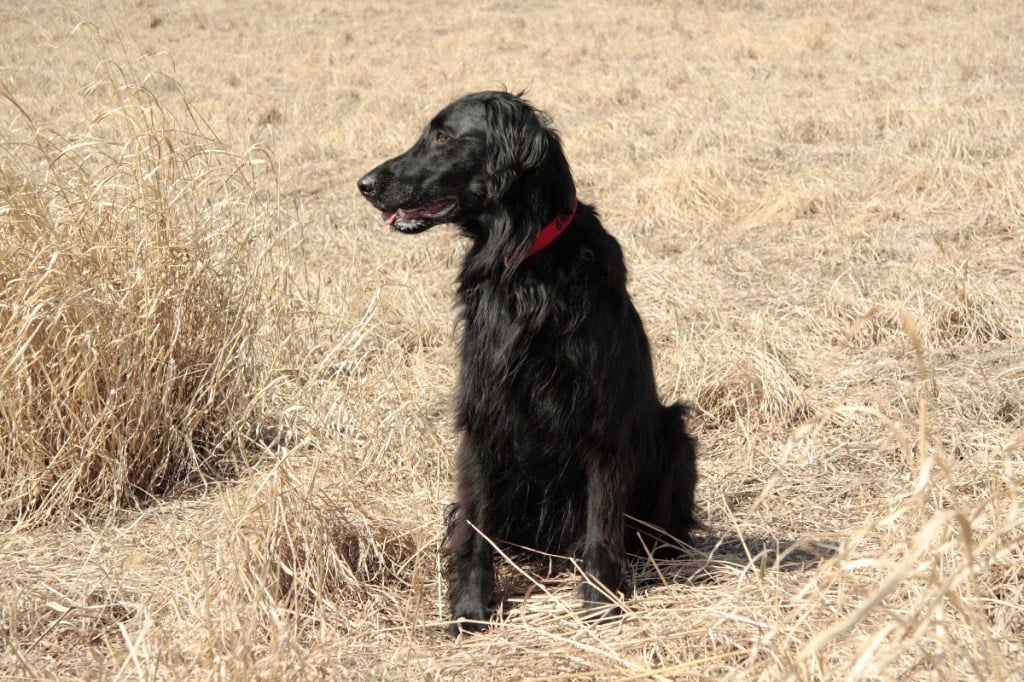
Diet and Nutrition for Flat-Coated Retrievers
When fully grown, these large dogs require approximately 3.5 to 4.5 cups of a high-quality dry dog food daily. Talk with your veterinarian about the appropriate portion sizes based on your flat-coated retriever’s age, metabolism, and activity level.
Where to Adopt or Purchase Flat-Coated Retrievers
People interested in purchasing a flat-coated retriever may start their search with the Flat-Coated Retriever Society of America, the national parent club for this type of dog. The organization provides general information about the breed, plus a list of active breeders and rescue resources. Families and individuals interested in adopting a flat-coated retriever needing a loving home can complete an adoption questionnaire to start the adoption process.
Related Breeds
The flat-coated retriever breed is unique in many ways, but it is also similar to other retriever dogs in terms of temperament, size, and energy. Here are some other breeds that you might consider before making the huge decision to adopt a new pet:
- Labrador retriever
- Golden retriever
- Newfoundland
- Spaniel water dogs
- Setters
- Sheepdogs
Pet Insurance for Flat-Coated Retrievers
In addition to ensuring your flat-coated retriever gets plenty of exercise, attention, and food each day, one of the most important things to do for your dog is enroll in pet insurance. At Healthy Paws, we take the guesswork out of figuring out how to pay costly vet bills with our easy-to-understand plan and speedy claim payouts. Whenever your flat-coated retriever needs care for an illness, accident, emergency, hereditary condition, breed-specific condition, cancer, or alternative medicine, we are here for you.
Please request your flat-coated retriever insurance quote on our website today to prioritize your pet’s health and happiness. We’ve been the top-rated pet insurance plan for the past seven years and offer flexible premium and deductible options to help you make the best decisions for your furry friend.
